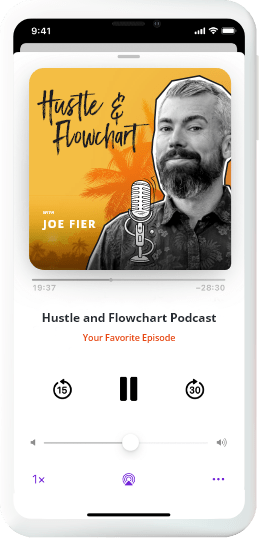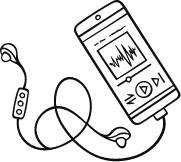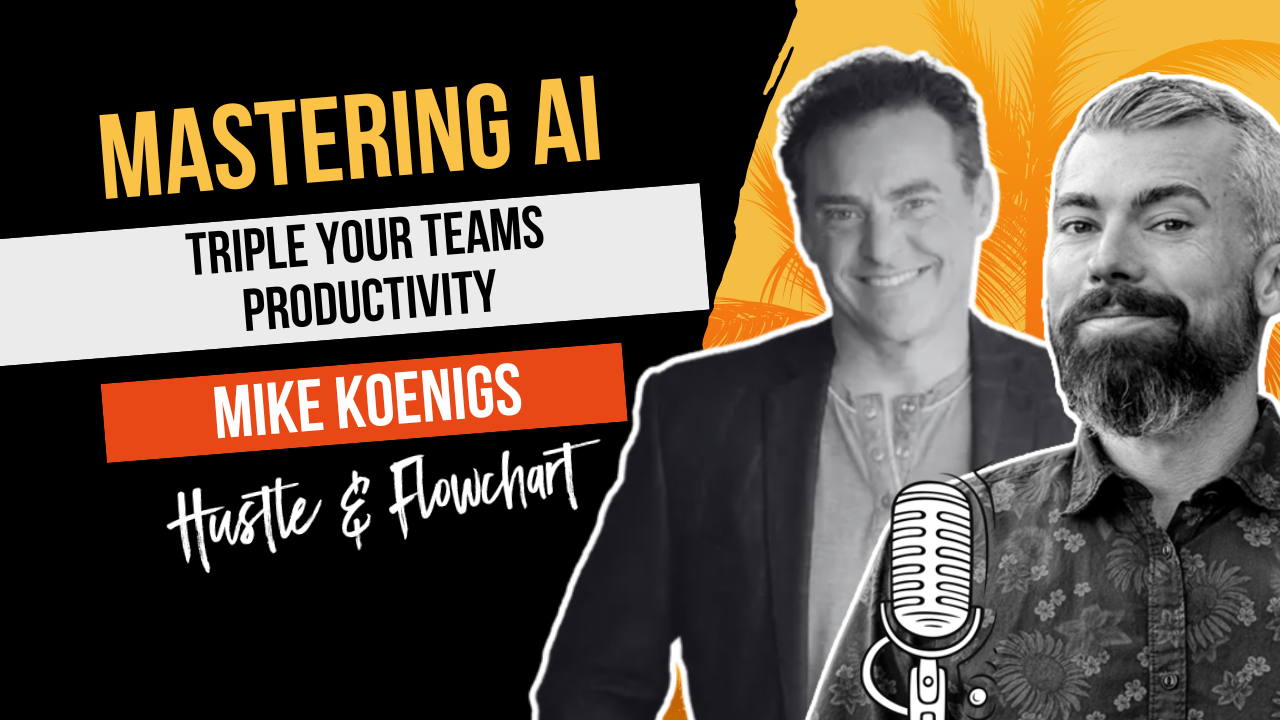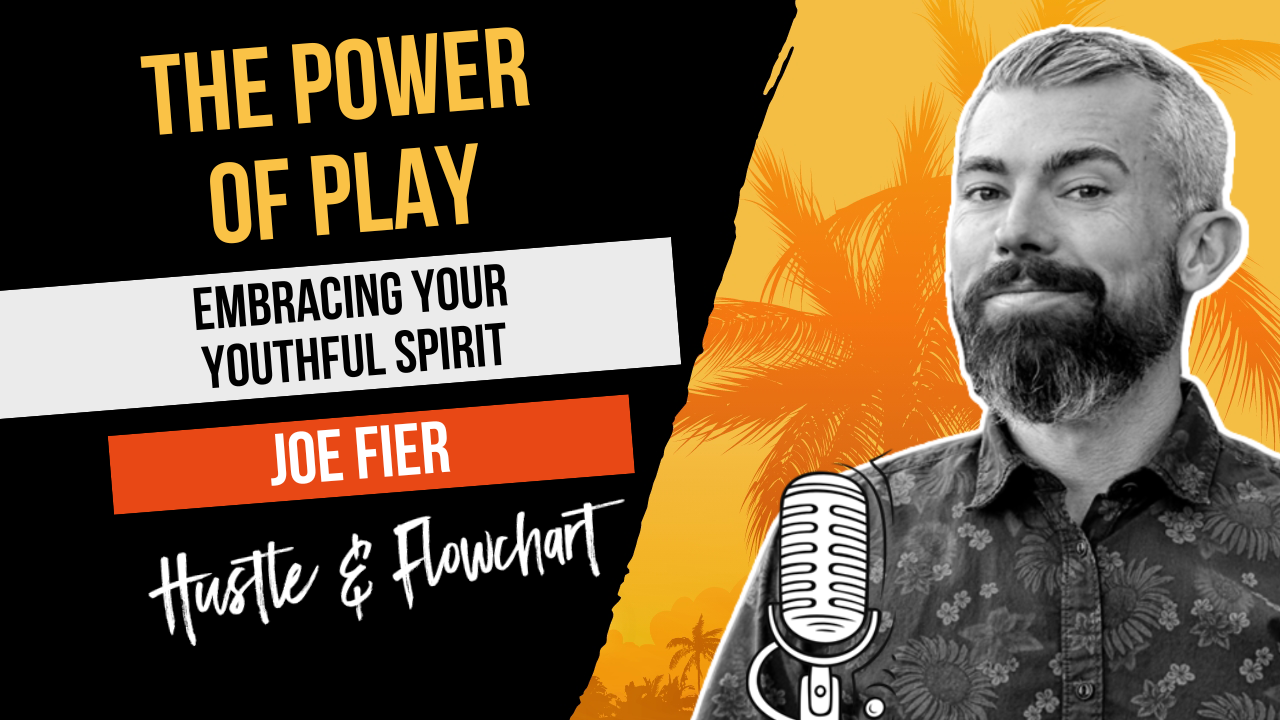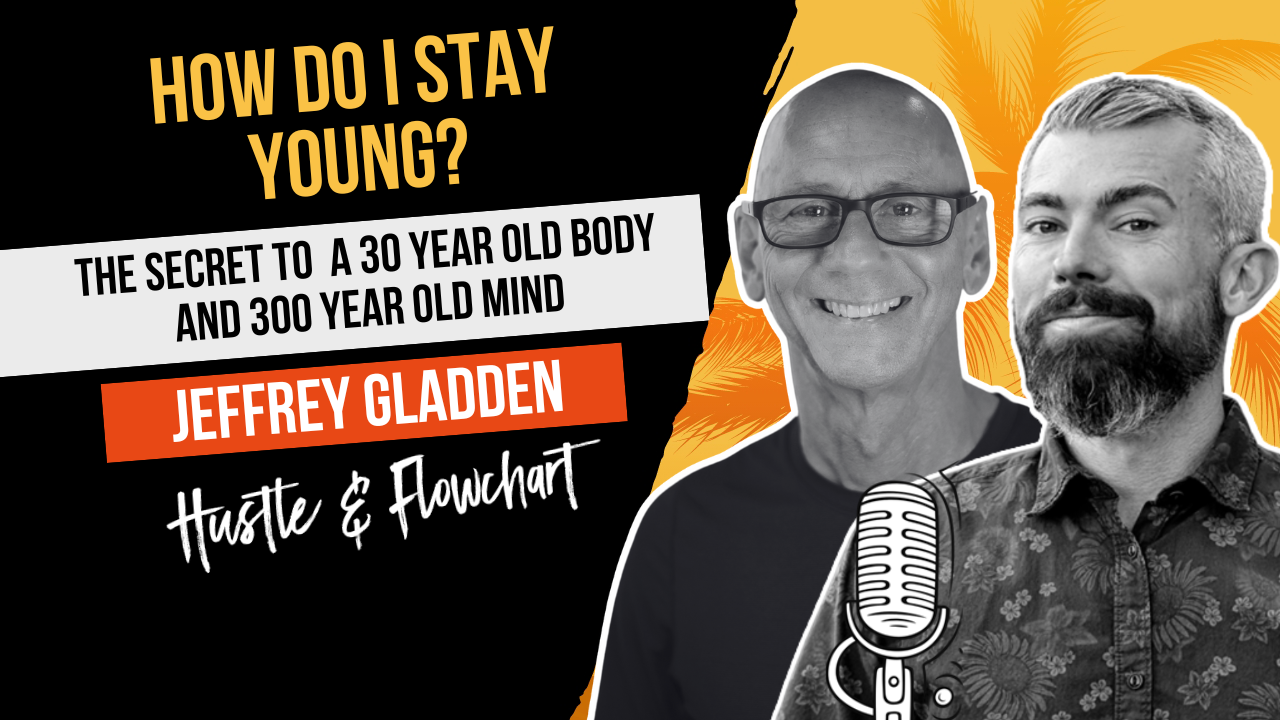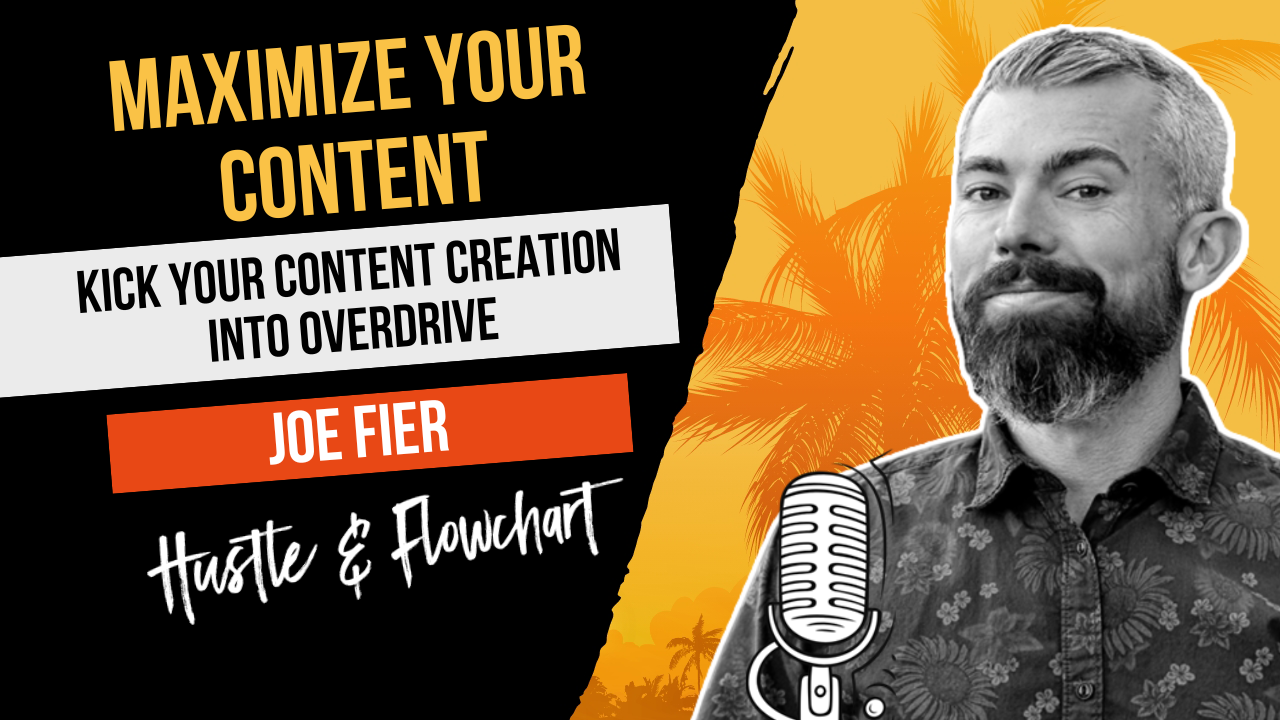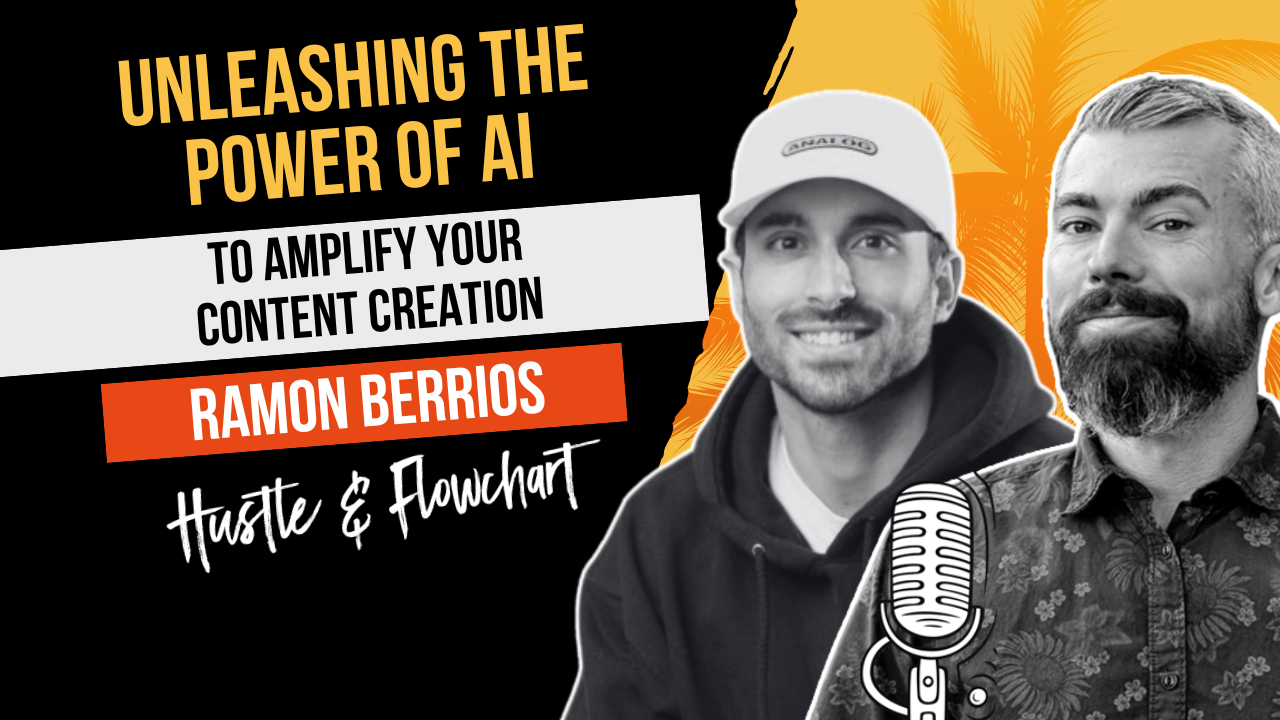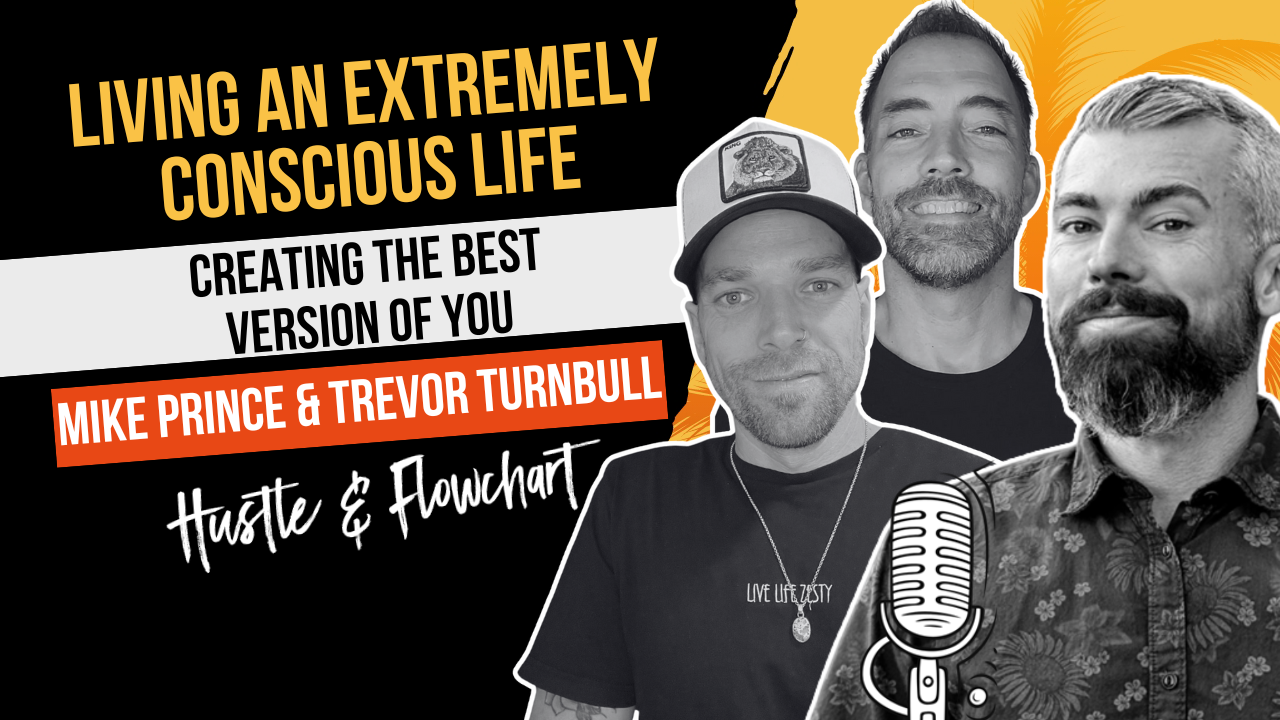[adrotate group=”8″]
Navid Moazzez – I had the opportunity to chat with Navid Moazzez of Virtual Summit Mastery and really dive into the concept of Virtual Summits. A virtual summit is essentially an online event in which you pick a niche and interview several thought leaders in that niche. You then allow people to register for the event for free but ask them to pay to have access to the recordings after the event is over.
The benefits of doing a virtual summit are huge. You get to borrow the credibility of the experts you interview as your featured on the screen with them. You create loads of content in a very short amount of time. You have a product that you can sell. Plus, you learn a ton amazing information on a topic that excites you in the process.
Navid has got the process down to a science and he breaks it all down in this episode of The Authority Multiplier Podcast.
Resources Mentioned
- NavidMoazzez.com
- Virtual Summit Mastery
- Vimeo
- ClickFunnels
- Wishlist Member
- Watch the video version
- Buy Twitter Followers
- Clickfunnels vs LeadPages (Our Comparison)
Quotables
Virtual Summits connect you with influencers, build your list, and create income at the same time Click To Tweet
Transcript
[mks_toggle title=”Open Transcription” state=”close “]
Matt Wolfe: What is up, everybody? Welcome back to the Authority Multiplier Podcast. Once again, I am Matt Wolfe, and I really appreciate you taking the time to join me today. Today, I have a guest. Our very first guest episode of the Authority Multiplier Podcast. This one was a really fun interview that I did with a guy named Navid Moazzez.
Navid had a very interesting and very fun way to build authority and build a brand and connect with influencers, and network, and create a product. He just built this entire system around networking and doing interviews with people and building his own brand in the process. He calls this process “virtual summits.”
I know he’s probably not the first person to ever do virtual summits or even use the term “virtual summits,” but he’s risen to be the authority in the world of virtual summits. He’s the guy who’s out there teaching the concept of virtual summits and helping online businesses and entrepreneurs and people that want to build their authority. He’s helping them set up these virtual summits.
I’m not going to go too deep into what the concept of a virtual summit is. I’ll let him explain on the call, but essentially, you get to interview a ton of guests. You get to borrow their credibility. You get to create a product that you can then go and sell, and in the process, you’re building your own personal brand in all sorts of new ways. It’s a really cool concept, and I couldn’t be more excited to have Navid on the call.
In this call, he’s going to teach you his step-by-step strategy for doing these virtual summits. If you want to get all of the behind-the-scenes, all of the additional footage, all of the video version of the conversation and a ton more that Navid and I went into, make sure you’re a member of Authority Insiders over at AuthorityInsiders.net. Go over to AuthorityInsiders.net, and you can get the full video version of this with all of the behind-the-scenes footage and additional conversation that I had with Navid. Without any further ado, I’m going to go ahead and welcome Navid onto the call.
Hey, Navid. First off, I just want to thank you for taking the time and being on this call, but second, I really just want to jump straight in. Why don’t we go ahead and start by learning your story. Why don’t you tell us about how you got into online marketing and how you discovered this virtual summit thing.
Navid Moazzez: Sure. It started, I would say, in 2012 when I found a mentor. That was the first pivotal moment. I started researching more, but I was procrastinating a whole lot. I didn’t take action there, even though I had in my mind that I would start NavidMoazzez.com already there, but then a really horrible moment in my life happened in 2013 when my younger brother passed away. Then I realized, “Okay, now I have to really start taking action and do something with my life and do something that matters to me and obviously to other people.”
Then, I launched my site in June. I took the right action. I launched it. I interviewed Pat Flynn. That’s how I started. I reached out to Pat. He was having an event for his book. I interviewed him there, and I had no experience with interviews or anything like that at that time, but I tried to figure it out and do the best I could. I continued to do interviews. In 2014, I also launched a podcast. I was having my blog, having not too much traction, but I was building relationships and doing the things I thought was right.
Then, at one point, I realized, “Okay, my podcast is going quite well,” but honestly, was not giving me any traction. When it came to my business, I was not generating that much cash flow from it, $1,000 here and there, but it was not anything I could really quit my job with. I was starting thinking, “How can I grow my email list?” The podcast wasn’t doing it, and I knew the importance of having a great relationship with your email list. I already had a pretty passionate audience there, but it was only a few hundred people, so I was trying to see how could I grow that faster.
I saw an opportunity when I started researching more. I was already doing these interviews. I was already pretty good at it. I had practiced quite a bit. I saw health summits. They were doing these online events where they interview some experts, or having presentations from experts. I saw that they were free to sign up for. I was like, “Okay, how can it generate money?” Right?
It was quite an interesting concept. They sign up for free. Then, during the summit, they actually sold an all-access pass. They sold the recordings, some bonuses, and an irresistible offer for 69 to, maybe it was, $97, something like that, was the price range for that. Some of them were generating 6 to 7 figures from a free event. They grew their email list by tens of thousands of people, some of these bigger summits in the health industry.
Then, I saw some people in the online marketing niche that’s doing it. Marisa Murgatroyd was one of the first I found. She was doing the Superhero Summits. They were really popular. Then, I started researching more and more and decided that I would go all in. This would be the thing that took my business to the next level. I just decided on this. I didn’t really know how to execute. That’s the quick rundown up until the point I realized, “Okay, summit’s going to be the thing that really is going to help me and move things to the next level.”
Matt Wolfe: What is one of these summits? Can you explain what a summit is?
Navid Moazzez: Yeah. A lot of people obviously interview some experts in their field. It can be typically as few as 10 people, but I recommend around 20 to 30 people. My first summit had 88 people. It was just crazy. I went over the board. You don’t need even close to that to get great results, but I typically say 20 to 30 people. The difference between, let’s say, a webinar … A webinar is like a one-time event, while a summit goes on over a period of a few days. It could be 7 days to 10 days.
Then, you have 3 to 4 interviews going live every day. Or, it can also be 1 interview per day. It depends how many speakers you have. You drip them out, and you have unlimited availability, which is really important for getting people to take action and also purchase the all-access pass, which is, as I said, the summit recordings and all that in a membership site.
That’s the quick rundown, I would say. Some people think, “Okay, so how would this be different than a podcast?” A podcast could be very similar. You interview experts in your field, but a summit has so much higher perceived value, in my opinion, because … Imagine people on a podcast. They’re driving in their car. They’re at the gym.
On a summit, you have these video interviews embedded on a page where they can actually tune in. They can click the links of the speakers below the videos. Actually, they can get some real traffic to their websites, while a podcast, what do they get? Obviously, they get to share their message, but they might not get any opt-ins and stuff like that. That’s the positioning of a summit.
If you have to explain it, let’s say you are reaching out to someone, how you can make it a win-win, you can say, “Okay, I can link up your freebie or a giveaway below the video interview.” That’s what I’ve been doing a lot, and it works really well.
Matt Wolfe: Let me just clarify. A summit, is it typically live? Or, is a summit prerecorded interviews?
Navid Moazzez: It can be both, actually. I saw at Marissa Murgatroyd, she has been doing it live. I was say to someone starting out, “Don’t worry too much that it has to be live because it’s very stressful to make it work and also schedule interviews with some experts.” Everything got to really fit together if you’re doing it live or, let’s say, 7 to 10 days. If you’re doing it live, don’t do more than 1 interview per day. It would just be too stressful to manage this. You’ve got to send multiple emails. It’s just too much. I’ve done prerecorded, and it works really, really well.
And also, if you mix and some live elements. You can have a hangout to kick things off, like opening the whole summit with yourself there. It drives a lot of engagement then also sales for the all-access pass because people sign up for free, but they are also excited to take action if you have a great offer there. That’s what I’ve been doing. Also, a closing keynote, that’s something you can have after the summit.
Other than that, it’s just prerecorded. You drip them out. You embed the videos on a page. That’s the simple rundown, but there’s a lot that goes into the technicality of running it, as well.
Matt Wolfe: Essentially, what you’re doing is you’re picking a niche at a specific topic that you want to focus on. Then, you line up a whole bunch of interviews, get the interviews prerecorded, put them in a membership site and then drip them out over a certain amount of days so that it almost mimics a live event of a bunch of speakers on a specific topic.
Navid Moazzez: Yeah, that’s a great question. I would say that for the all-access pass, I have them in a membership site. I can use something like WishList Member, or any membership software pretty much works. That’s just the WordPress plugin, but I’ve seen, recently, we created a virtual summit funnel with ClickFunnels. We just modeled the custom WordPress site we did for the Self-Publishing Success Summit.
That was the most recent one I ran with Chandler Bolt. It was just crazy. It did 300,000 in sales for its business and 25,000 opt-ins from a free summit they sign up for. Then, we sold the all-access pass. Then, also at the end there, we had his high-end product. If you’re more advanced, that’s something that you can do. You can also sell your product at the end because those people who sign up and buy the all-access pass, they’re very eager to get to the next level. It shortens the customer journey. You can get higher-end sales faster. That’s something that’s really powerful.
To get back to your question there, how I embed the videos, actually it could just be a free WordPress site. It doesn’t have to be protected for a free summit. It can just be out there. You can even schedule the interviews to live at the specific time. Let’s say you want an interview to live at 10 am, you’ll schedule it. That’s a way to save time during your summit, so you don’t have to go in there every day, “Okay, now I’m going to publish it.” Obviously, you need to remove it after the 48-hour time is up or whatever you’re using, but that’s typically what I do.
So I save more time for my first summit, I password-protected the Vimeo videos. Then, I had to go in and remove the password because in my membership, it was still password-protected as well. That just added a lot of headaches to me, but I avoided that by scheduling it in advance and having the Vimeo video embedded in advance there as well.
Matt Wolfe: Cool. To monetize this, typically these are, you’ll do the free summit … I’m just clarifying here. You typically do the free summit and then people get access to the summit while it’s live. Right?
Navid Moazzez: Yeah.
Matt Wolfe: Then, they can purchase the all-access pass, which gets them the recordings. That’s how you monetize these?
Navid Moazzez: Yes. There’s many ways to monetize it. You can have sponsors, too, but typically, the main source of income from these events can be the all-access pass. Yes, they sign up for free. Then after that, they go to the Thank You page where you say, “Hey, the summit starts this and this date.” Then, you will have this irresistible offer right there on the Thank You page. That’s a mistake a lot of people make that they don’t have anything there. They just signed up. They’re excited. Maybe they want to purchase and get all the recordings. Maybe they can’t attend the entire event live.
I see this all the time. I don’t understand why they don’t have this instant upsell to the all-access pass. You can have a video there. You can have a message share what the all-access pass is all about up on this Thank You page and then have the offer there. It just works really well.
Depending on how big your summit is obviously, you can get potentially hundreds of sales just during this period before the summit starts. Or, if it’s smaller, get less. Still, you get sales before you actually have 1 interview go live for people who just attend for free. I think that’s great. You can just have all those recordings. If it’s prerecorded, just add those to the membership site. That’s an incentive for people. They can get access before the summit starts.
Matt Wolfe: That’s cool. When you bring on these guests, do you allow them to promote their products and you take a commission? Do you do anything like that? Or, do you tend to make it a no-pitch …
Navid Moazzez: Yeah. I’ve seen both. I haven’t done where the speakers can actually pitch their products. I wanted my summits to be all about the content that is being shared. If they purchased my all-access pass, I didn’t want them to feel that they had to purchase something else. Obviously, that’s a model you can choose, and Marissa Murgatroyd has done that very successfully for hers, where she makes a lot of sales for the all-access pass or the summit recordings, but at the same time, the speakers pitch at the end.
It can be like a webinars pretty much, but I personally didn’t want to do that, so it was mostly the all-access pass sales and also back-end sales for, let’s say, coaching or if you have a pilot program, you can roll that out. If you’re in the early stage of your business, or if you’re advanced, you just sell your high-end program at the end.
Keep in mind that your summit got to be aligned with what you’re going to do next. For example, I can just tell you this, for the Self-Publishing Success Summit, Chandler Bolt had the Self-Publishing School. It was very connected to that, so we got, I think, 110,000 in sales for the actual all-access pass for summit recordings. Then, we got 200,000 or so in sales for his high-end program in 4 days, just when the summit ended. That’s a way to maximize things, depending on where you are in your business right now.
Matt Wolfe: That’s awesome. Yeah, I was actually going to ask if you had any examples or case studies from some other virtual summits. Are there any others that you can list off and talk about?
Navid Moazzez: Yeah. For example, AJ Amyx, I helped him out. He was a student of mine. He went through my Virtual Summit Mastery, the system I have there. I think he had about, he had been working a few years to get the list 1,500 or 1,600 people. Then, he did the Summit. He grew his list very quickly to 2,400 people. He had Michael Port as a live closing keynote. He got some amazing speakers on there. Obviously, that helped him to grow faster.
He didn’t make as much as 300,000, but he was also in an earlier stage. He didn’t have this … Chandler had already been making quite a lot of money. He was on the track to $1,000,000. AJ wanted to take it to 6 figures, I think, and beyond. He got 16,000 or a little bit more with all the back-end sales as well. That was the results he got from the Movement Marketing Summit, which he put together.
Matt Wolfe: Cool. Let me ask you this. When you’re trying to put together one of these summits, how do you approach people to be a part of the summit, and how far in advance do you try to lock them down?
Navid Moazzez: I always say this. If you’re thinking about doing a summit in, let’s say, 3 to 6 months from now, I would start now to build authentic, powerful relationships with influencers and other people before you actually need them. Try to add value without asking for anything in return. That’s what I would do because you don’t have to start off by asking them, “Hey, can you be on my summit?” Maybe they say “yes.” It’s not that hard to get a “yes” from people, honestly, but does that mean that they will promote you or they maybe just do the interview because it’s low pressure for them, to just come on there pretty much like a podcast?
If you build a relationship, so you add value to them by commenting on their blog, being a valuable member of their community. You can even be a case study. I do this all the time. I give shout outs to people. Recently, as an example, I did some things with Ryan Levesque’s Ask Formula. I implemented some things. I gave him a shout out on Facebook, so simple. He responded to that. Do you think if I reach out to him and ask him, “Hey, Ryan, would you like to do an interview with me? I would like to feature you on my next summit or podcast.” Of course. He would say yes if it’s a good timing. He would be pretty simple.
That’s what I would start with. There’s a way to obviously get people on if you’re doing it cold, too. I can share that, but that’s where I would start. Go on Twitter. Share all their content they’re putting out there. You make your speaker wish list. If you want 30 people on your summit, you got to make a list of maybe 50 to 60 people in your industry, and make sure there are a good fit, aligned with your audience and what you want to share. Just because they are big names doesn’t necessarily mean they are a good fit for being on your summit in the first place.
That’s where I would start, and then you can move forward to officially inviting them on afterwards. That can be maybe a few months before, obviously, you’re going to start this process. Maybe 2 months before, you set aside when you’re going to do the interviews and all that. Or, you start sooner, but you lock the interviews down for later, so you’re planning in advance, essentially.
Matt Wolfe: Very cool. That’s some great advice. After these summits are over, you’ve got all this content, you’ve got all these training videos you’ve made. Do you continue to sell it? Or, is it you do the live summit, you open up the all-access pass, and then that closes down? Or, do you reuse this content elsewhere? Do you continue to sell into the all-access pass forever? What do you do with it from that point?
Navid Moazzez: You’re going to like this because you’re a big proponent of repurposing. I know that, Matt. This is such a killer. You can create a summit. Obviously, there’s a lot of work you’re putting into it. You’re doing a lot of interviews with speakers for your summit. Imagine what you can do. You can transcribe all those interviews. That’s, at the end of the day, have it in written form. Obviously, you got to polish this up a little bit, but you can publish a book, maybe even several best-selling books on Amazon. That’s another source. You can get people to sign up from this book and then get them back to your summit.
I had actually one student that did that. She did The Appreneuer Summit, Charlyn Keating. Then, she decided, “Okay, I’m going to transcribe all the interviews. I’m going to polish it up a little bit.” Then, she published The Appreneuer Playbook, which became a #1 Amazon best-seller. It’s not that hard to do that, but it still adds a lot of credibility to what you’re doing.
Obviously, what she did also was to make the summit evergreen. Instead of just having the sales page on the front-end, she essentially offers 4 interviews when they sign up. She continues to grow her list, whether via Facebook ads or just when she’s on a podcast or guest blogging. She can link this up so people come there and sign up to get some value. They get 4. Maybe you can give away, too, a freebie report or some summary of the interviews, too, to offer that when they sign up. Then afterwards, they get an email sequence where you can promote the all-access pass. You can continue to make sales this way.
Essentially, it doesn’t end. You can create so much content from this. You can even launch some of this in a podcast, maybe not all of it since people paid for it, but a little bit, you can put it out there here and there. You can add snippets to YouTube, preview videos. So much traffic you can get from this if you just put in the work to get it out there. It’s just one time you create the content, and then put it out there in other places.
Matt Wolfe: Yeah, that’s awesome. That’s exactly what I think I would do with it. I would probably launch the thing and then figure out how to put it into a book, put it on YouTube, make blog posts out of it, just figure out as many ways as possible, frickin’ put it on DVDs, let people buy the physical DVDs, all sorts of stuff.
Navid Moazzez: Yeah, right. [inaudible 00:21:24] works. It’s very powerful, I think. With a summit, people have to realize it’s not just to interview some people. There’s a lot of strategies that goes in, but if you put in the work, you can get really extraordinary results. You can get thousands of subscribers just from doing a summit when you have speakers promoting you, but then you have to start thinking about, “How can I make this a win-win for everyone involved?”
The speakers, how can you make it a win-win for them? Essentially, you can, as I said earlier, you can offer to link up their freebie below the videos on the free summit. That’s a great win because people are tuning in. They want to access that. Or, as you mentioned, you can let them sell if that’s for you. I haven’t done this myself, but it definitely is strategies that can work if you want to attract some names. Maybe they require that for some reason, but you have to decide that before you reach out if you’re going to have some special conditions for this big-name speaker, if they can only pitch, for example, if there is an A-lister. I haven’t needed to do that. I haven’t needed to pay any speakers, either. It’s just about reaching out.
You can mention in this email, too, how many people are you expecting? That’s a social proof, right? You can say, “Okay, I’m expecting 3,000 people,” if that’s what you expect from your summit. Or, as we did for Self-Publishing Success Summit, we expected 10,000 people; we got almost 30,000. You just have to make this clear to people what they are in for because then it’s also easier to get them to promote and share this out with their audience when they know what’s in it for them, so they are not just giving something to you. They are sharing with their audience, but what are they getting back?
Matt Wolfe: Yeah. I love that. One thing that I love about this concept, too, is I surveyed my list not too long ago and asked them what their biggest struggle was with blogging and content marketing and that sort of thing. One of the biggest struggles a lot of people said was, “I don’t want to create a blog, or I don’t want to create a podcast on something because I’m not an expert in a niche.”
What I love about this concept is you don’t need to be an expert. You can pick a niche that you just want to learn about. You can pick a niche that, “Okay, that niche is cool. That niche excites me. I want to go learn more about that.” Pick that niche, create a summit on it, and then let everybody else be the experts and teach you in the process.
Navid Moazzez: Yeah, definitely. I love this, actually. That’s why summits are powerful. People have to just get this out of their head. If you’re not an expert, it doesn’t really matter. You just have to have a very strong desire to learn about something to provide value to the experts. That’s one of the myths that you need to have an online brand and email list already before doing a summit. Can it help? Definitely.
I’m not going to lie. If you have a 6-figure business already, you’re going to do a bigger summit, but when you’re starting from scratch or very small audience, and you do a summit, to get it 1,000 or a few thousand people join the summit is a big success. You can scale it for later. I’m so tired of people saying … They compare themselves to someone who’s been doing it for years, like Marissa Murgatroyd or now myself. They compare, for example, one of my summits now would obviously be a bigger than my first one, obviously.
People tend to compare that too much what they want to do. They should compare it to the first summit I did or to my students. That’s what they should compare themselves to. That’s where they will see more success if they have this mindset.
Matt Wolfe: Absolutely. That’s great advice. Definitely. Don’t compare yourself to what others are doing. Compare yourself to your previous results. Compare yourself to your past. Look at what you’ve accomplished, what you’ve achieved versus what you had in the past. That’s a much better way of looking at things.
I have a few last questions here. One, let’s talk really quickly about the technology. What sort of technology to use to build these? What video software do you use? What membership software do you use? How do you process the payments? Real quickly, give us your checklist of tools that you’d use to create something like this.
Navid Moazzez: Sure. Before, my answer would have been just WordPress. That’s the way I would do it, self-hosted WordPress site. You got to have a stable hosting, obviously, because otherwise, your site can go down when a lot of big names start promoting you. If you can’t afford something like ClickFunnels, it actually could be easier for you to set this up yourself.
We actually created a summit funnel in there. We just modeled what we did with the Self-Publishing Success Summit. It’s pretty straightforward. You have all the funnels, and you can build it out. It’s 97 per month, but WordPress works just as fine. You have some theme there with ThemeForest you can use. LeadPages has some templates, too, you can check out for sure to start building this out. For video, I use Vimeo. The reason I don’t use YouTube is because you don’t have full controls. I want to have it hosted on Vimeo. You can make it work only on your website. That’s for the free summit.
You also need, as you mentioned, you need a way to process payments. That depends a little bit where you are in your business. If you use something like Infusionsoft, like I do now, then they have a shopping cart. I actually like SamCart. I just use it with PayPal right now, but you need for a summit to plan an affiliate program. If you’re not using Infusionsoft, you can use something like Dealguardian or ClickBank to set this up. It just make it easy for yourself if you’re doing it the first time because ClickBank will handle all the affiliate payments for you.
They take a percentage, yes, but you don’t have to worry about that. Maybe when you’re starting out, you want to focus on something else, like promoting your summits. Don’t worry too much about all that affiliate stuff. ClickBank will handle most of this for you. I have a student using it right now, and it works great for him.
Other than that, email marketing. That’s obviously how you deliver your summit to people who sign up. Then, AWeber I used for my first one. MailChimp is another option, but a new one I really like is ConvertKit by Nathan Barry because it has some advanced functionality so you can tag people. It’s not too much more expensive than something like MailChimp or AWeber.
Obviously, MailChimp can be free, but you need an autoresponder, so you need to pay a little bit even if you use that. Right now, using Infusionsoft, it’s much more robust, obviously, and it adds more advanced functionality. For sure, for most people, I think they should check out ConvertKit. It has some great pricing when you’re starting. That’s that.
What else? I’m just thinking. Canva.com for promotional images is a really cool resource. That’s just amazing. You need to create those promotional images to get speakers eager to promote the summit because if you put their face on there, they will take … Matt, if I made an image with you on it, and you were on my summit, would you share this out, at least on social media?
Matt Wolfe: Yeah, absolutely.
Navid Moazzez: Yeah, right. That’s what we found, too. I did that for my first summit. I put a lot of time into making it really look good. Then, I shared this with the speakers, and I had created templates for them to swipe copy everything they needed to share this with their email list. I made it super easy for them. I think that’s also for the tools. Canva is good for that. Anything else I forgot, you can just ask. It’s quite a lot that goes into it. I have, obviously, a list of resources, but every once in a while, I just forget. Something can slip through. Ask if something is unclear there, Matt.
Matt Wolfe: I think you covered everything. That’s all good. I did want to ask you about ClickFunnels. I don’t have much experience with ClickFunnels, but you made it sound like ClickFunnels will do a lot of the work for you. With ClickFunnels, I know you can build the opt-in pages, you can build your sales pages. Do you actually load all the content into the back-end of ClickFunnels and use their membership platform as well? How do you use ClickFunnels? I’ve heard mixed feelings about ClickFunnels, so I’m curious about your thoughts on it.
Navid Moazzez: Yeah. I personally don’t use it, but I have someone I partnered up with, one of my students. We created this funnel. I love it. If that was my first summit, I would for sure use it. I would for sure maybe even invest in the funnel we created because it’s done for you, literally. You just have to add your branding, logo, and everything.
If you were doing it yourself [inaudible 00:30:23] yes, you have to create the landing page, you have to create a Thank You page, you have to create the sales page. You have templates you can choose from, and you can add sections, so it’s pretty easy, actually. Obviously, it will take you some time. It took my guy took 30 hours, something like that, to rebuild the Self-Publishing Success Summit, all the pages. There’s 10-plus pages involved.
You asked about how you load the content. Essentially, you can do very similar like WordPress. You can create these, I guess it’s like landing pages, but it’s like inner pages. You put the interviews there for the free summit. You can create essentially the same as you would with a WordPress site. You can have a sidebar there. You can have a little banner that will take them to the sales page if they click there. You have the interview. You have Facebook comments on the page, too.
You can do pretty much the same thing as you would do, like a model this, essentially. I recommend people just look what other people are doing. Maybe you can link up even a few summits below the interview so people get an idea. That’s easier than I just explain what it looks like. That’s it. With ClickFunnels, then you have the funnels set up. They are taken from the landing page to the Thank You page. Then, if they click the order button there, they essentially go to the order form. It’s also done for you.
ClickFunnels integrates very easily with Stripe, PayPal, and other options, also with your favorite email marketing provider as well. I really like it. Even Michael Hyatt, big name, he partnered with, I think ClickFunnels is a partner on his latest summit, or his first summit is really blowing up because it has such a big reach.
The Influence and Impact Summit, he used ClickFunnels for that. That just goes to show that if a big name can do that, it’s for everyone. It’s just if you’re willing to invest the $97 per month into it. I guess that can be a hurdle when you are just starting out in your business to say, “Okay, I’m going to have ClickFunnels paying every month for a recurring fee there.”
Matt Wolfe: Yeah. I have a question that jumps back. I probably should have asked it earlier, but it popped into my head, so I want to ask it. When you’re doing a virtual summit on a specific topic, how do you come up with questions that are going to make every speaker seem unique? If it’s on a single topic, and you, say, have 50 speakers, wouldn’t you get a lot of people saying the same thing over and over again? How do you differentiate that and make it so that all the content feels unique across all the speakers?
Navid Moazzez: That’s a good one. I guess we can take something like self-publishing because, essentially, that’s a topic. That’s quite specific. If people hear the Self-Publishing Success Summit, they know exactly what they’re going to get on this summit. How we did it on this specific summit, we divided the summit into phases. We had phase 1 was writing because it makes sense. You’re going to write a book. Phase 2 was marketing and publishing. Phase 3 was monetizing. That’s how we can fit the speakers in each phase. We did it as case studies.
Chandler did a good job there because the headlines or the titles for each interview was really compelling, like “How His Book Made Him $100,000,” or “How Someone Built an 8-figure Business Based on My Book,” things like that, essentially. That got people really excited. They learned a ton on those interviews. Their story, how they built something with whatever they’re using, whatever topic it is, it doesn’t have to be self-publishing, that’s unique. That will always be unique.
Don’t go too much into their journey, their story, all this. Go right into the meat because this is not a podcast. It’s actually actionable content. You got to deliver the goods. You got to deliver some results, because why? If people are willing to pay for this, then you need to get them some wins and not just some inspiration that they feel good about but actually something that if they implement this, they will get results in their business or whatever you’re teaching them. I think that’s the key, honestly. Otherwise, it won’t do as well. That’s what I’ve seen.
Matt Wolfe: Absolutely. Cool. The final topic I want to talk about quickly is traffic. Once you’ve got this virtual summit set up, you’ve got all your speakers lined up, you’ve figured out your technology, all that’s dialed in, how do we drive traffic to get people onto a virtual summit?
Navid Moazzez: That’s what I call the launch phase. That starts typically 3 to 4 weeks before the summit kicks off. That’s also a mistake people make. They’re like, “Okay, now I’m going to launch this. Now I’ve done everything,” but its last-minute, so they launch a few days before the first interview, and they get maybe 100 opt-ins. That’s actually something I see a lot. I’ve had a few students, that’s just a little rundown there, but I had a few students, they were like, “Oh, I’m so stressed. This is not going to work.” I told them, “Hold off. Yes, you announced it, but hold off with the promotion. Say to the speakers that you are postponing this because you’re expecting more people to show up if you postpone this for 3 weeks.”
That just goes to show that the promotional period has to be a little bit longer but not too long. 3 to 4 weeks is enough. Then, start promoting to your own list if you have it. Maybe do Facebook ads if that’s something you have the budget for. Then, you start with the speakers. Around 2 weeks before, I would say, is a good time because they are usually busy. They can’t promote 4 weeks before, so with the speakers, I would start around 2 weeks before, but I would keep the communication with them even before that, so they know what’s involved. Show them the affiliate page. Maybe you have a really good rundown there where it goes into the affiliate promotion you’re doing.
Treat it as a product launch, essentially. If you’ve seen product launches, they have a promotional calendar. We did the same for the Self-Publishing Success Summit. We gave them the best dates to mail, so there was no confusion there at all in what went into this. They know exactly, and we kept following up. That’s probably the key there because people might have said, “Yes, I’m going to promote this,” but maybe something came in the way so they forgot about it. You’ve got to keep following up. If they said “yes,” they got to promote, essentially. I try to get my success rate with that almost 100%.
There’s always people who say they will, and they won’t, but who cares? Maybe something came up, so they couldn’t. Don’t get bogged down if a speaker doesn’t promote. It can be that they just have a very busy schedule right now. Continue to build that relationship. Maybe for the next summit or next product you promote, they will help you and be a partner of yours.
You can even help speakers. Maybe when you’re reaching out to them, as an incentive, you say, “Okay, my audience is going to grow by X amount of people with this summit. After the summit is over, I’m going to promote you to my email list of a few thousand people because that’s how I can provide value to you. Would you promote it for me? Would you help me out?” That’s how you can create these win-win relationships. It really works, especially if you’re starting. I think that’s a good way to really add value to someone who’s really a little bit more advanced than you want as a speaker.
Matt Wolfe: You actually set up an affiliate link for it, so when you create this virtual summit, and one of your speakers promotes it, they’re going to get a commission if somebody buys the all-access pass, right?
Navid Moazzez: Yes. That could be an incentive, but honestly, an all-access pass is typically around $97, at least the starting point. That’s less than 50 bucks, 50% commission. For most speakers, if they’re successful entrepreneurs, that’s not a lot of money. Still, you learn a lot about how to set this up. What you can do if you’re advanced, you can give them maybe lifetime commissions.
Let’s say they get lifetime cookie to the high-end programs. They just send people to free event here for your summit. Then, they purchase the all-access pass. Obviously, they get 50% commission there, but then in the future, you sell a lot of high-end programs. Then, they get maybe 40% commission, or even up to 50%. That, they can get a lot more if you’re selling a $1,000 to $2,000 product or a coaching program or whatever you offer. Mastermind, it could be anything pretty much.
You can have that as an incentive part of your affiliate program. That works well, especially if you have that in place already, so they know. Chandler, he had that for the Self-Publishing Success Summit. They already had created Self-Publishing School. It was already doing well, so it was a no-brainer to offer that in. Then, he got more partners involved for the next launch of his program.
I think that’s a great strategy, especially that’s how I’m trying to educate more seasoned online marketers or people who have successful businesses, what the summit can do for them. Now with Michael Hyatt doing a summit, I think it’s going to be much easier to prove my point that it really works.
Matt Wolfe: Awesome. Cool. I think I’ve got a pretty clear picture of the process. I really appreciate you walking me through it. My final question, then, would be where can people go learn more about you, learn more about virtual summits? Where can people connect?
Navid Moazzez: If you want more stuff about specifically virtual summits, I would go right to VirtualSummitMastery.com. You can get my video series. You can get even more stuff there, how to come up with your profitable virtual summit theme, all the tools, even more detail there. I have it laid out, some rookie mistakes, mix, and all this good stuff.
Obviously, my personal web site is NavidMoazzez.com. You can get the cheat sheet there if you want. My 7-step system is laid out there, so you can get that download as well if you’re interested. Or, just reach out to me. You can link up my email address, too, if people have any questions, at Navid@NavidMoazzez.com.
Matt Wolfe: Awesome. Perfect. Thanks again for joining me on this today, and I appreciate you taking the time.
Navid Moazzez: Definitely, thanks.
Matt Wolfe: Awesome. I hope you enjoyed that episode today with Navid Moazzez. If you want to get the full video version of that interview along with some additional discussion that I had with Navid before and after the call, head over AuthorityInsiders.net. Members of the Authority Insiders will get the all-access version of my conversation with Navid.
I love the concept that Navid just talked about here in that whole virtual summit concept, so much so that I am planning on setting up an authority summit, where I’m going to bring in guest experts to talk about strategies to build your personal brand and become the authority in your niche. Keep an eye out for that. Good things coming there, very, very exciting stuff.
Once again, I want to thank Navid for joining me on the call today and really not holding back, sharing pretty much all of his strategies and tips and tricks for creating these virtual summits. There was a ton of stuff there that pretty much anybody now can walk away and create a virtual summit of their own and start to ramp up their business and their authority and their personal brand in a brand new way.
Once again, thanks for hanging out with me today. If you haven’t subscribed, subscribe on iTunes. I always appreciate the reviews. Leave a review if you haven’t already, and I’ll see you in the next call. Talk to you later.[/mks_toggle]







